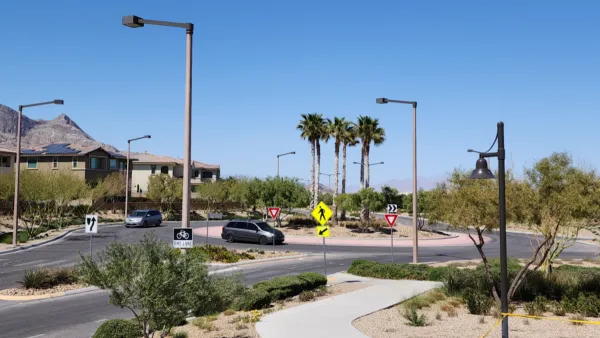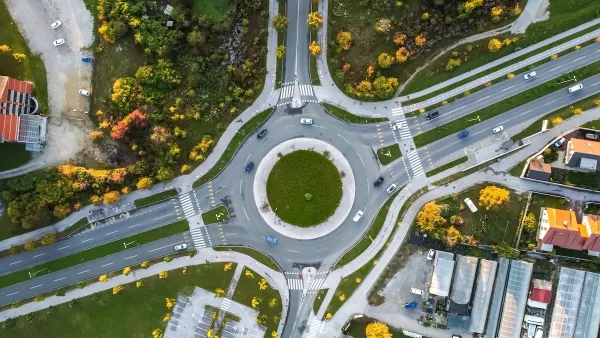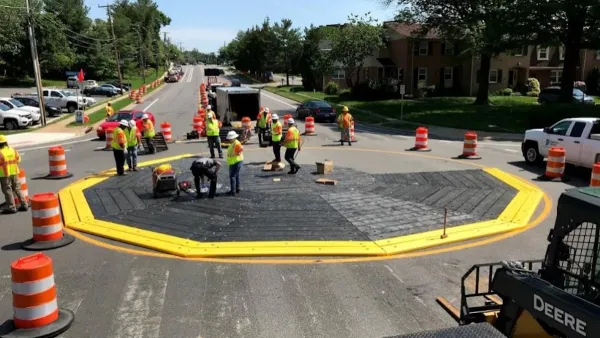"Shared streets" guru Ben Hamilton-Baillie has shown in the U.K. that there are a lot of better ways to manage traffic than stoplights. CNU asked Ben, as he prepares to come to the United States, if shared streets could work here.

"I am convinced that the principle of shared space and low-speed, civilised streets could be beneficially applied in North America," said Hamilton-Baillie in the interview. "Although the urban form, scale and context is often very different – and often particularly challenging! – human psychology is the same everywhere. And it is working with the grain of human behaviour and interaction which lies at the heart of shared space."
The Town of Ponyton, UK is one of Hamilton-Baillie's success stories. A video about the town's transformation can be seen here. The video shows the importance of paving materials and other subtle cues that slow traffic and make it possible to combine people, bikes and traffic safely.
"Just as in architecture, paving materials help convey values, priorities and purpose," says Hamilton-Baillie. "Recent street design has often been limited to a very limited palette of asphalt or concrete. Whilst these are excellent materials, we often use a much wider range of paving materials such as blocks, setts or cobbles, materials that can respond to the buildings or surroundings, and which can influence behaviour through our visual, auditory and tactile senses. Blocks often suggest lower speeds, and can be useful to contrast with more linear elements of streets. But we also use surface applications, paints, bonded gravel – anything that helps tell a rich story."
Ben Hamilton-Baillie will be sharing his experience with shared streets on June 6th at CNU 22 in Buffalo, New York.
FULL STORY: Talking with Ben Hamilton-Baillie About Shared Streets

National Parks Layoffs Will Cause Communities to Lose Billions
Thousands of essential park workers were laid off this week, just before the busy spring break season.

Retro-silient?: America’s First “Eco-burb,” The Woodlands Turns 50
A master-planned community north of Houston offers lessons on green infrastructure and resilient design, but falls short of its founder’s lofty affordability and walkability goals.

Delivering for America Plan Will Downgrade Mail Service in at Least 49.5 Percent of Zip Codes
Republican and Democrat lawmakers criticize the plan for its disproportionate negative impact on rural communities.

Test News Post 1
This is a summary

Test News Headline 46
Test for the image on the front page.

Balancing Bombs and Butterflies: How the National Guard Protects a Rare Species
The National Guard at Fort Indiantown Gap uses GIS technology and land management strategies to balance military training with conservation efforts, ensuring the survival of the rare eastern regal fritillary butterfly.
Urban Design for Planners 1: Software Tools
This six-course series explores essential urban design concepts using open source software and equips planners with the tools they need to participate fully in the urban design process.
Planning for Universal Design
Learn the tools for implementing Universal Design in planning regulations.
EMC Planning Group, Inc.
Planetizen
Planetizen
Mpact (formerly Rail~Volution)
Great Falls Development Authority, Inc.
HUDs Office of Policy Development and Research
NYU Wagner Graduate School of Public Service





























